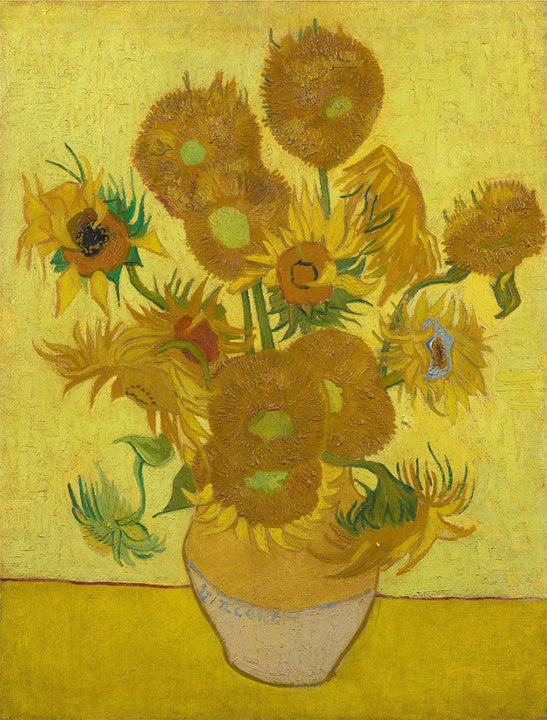
Vincent van Gogh's Sunflowers series represents more than just a simple bouquet; it symbolises his artistic ambitions, his friendships, and gratitude.
Van Gogh wanted to be known as “the painter of sunflowers,” much like other artists of his time who claimed certain flowers as their own. In a letter to his friend Paul Gauguin in 1889, he famously declared, “If Jeannin has the peony, Quost the hollyhock, I indeed, before others, have taken the sunflower.”
Unlike the peony or the hollyhock, sunflowers were viewed as rough, even ugly, by most artists. But for Vincent, their coarse beauty and resilience had a unique appeal. He loved the challenge of painting them at every stage of life — from full bloom to withering decay — seeing in them a reflection of life’s fleeting beauty.
The sunflower paintings carried a profound personal meaning for Van Gogh. To him, they symbolised gratitude, and he hoped that his work would offer comfort to those who viewed it.
In his early still lifes, he positioned the bold yellow blooms against blue backgrounds, from pale greenish-blue to a deep, royal blue. He intended for this contrast of yellow and blue to evoke the richness of stained-glass windows, creating a sense of warmth and serenity. Later, however, he switched to his iconic “light on light” approach: yellow sunflowers on a yellow background. This bold choice created an almost glowing effect, reinforcing the idea of sunflowers as radiant, life-affirming symbols.
Between 1888 and 1889 Van Gogh created four unique versions of Sunflowers plus three additional repetitions . All seven sunflower paintings were created with oil on canvas. Often, people refer to there being five versions of this iconic work, counting both visually similar versions — three and four — as well as the three repetitions. Below, you’ll see versions 1-4 from left to right, followed by the three repetitions.


Van Gogh’s fascination with sunflowers began during his time in Paris, where he practised painting various flowers. But it was the sunflower that captivated him most. Paul Gauguin, a fellow artist whom Van Gogh admired, took notice of these early sunflower paintings and described them as “completely Vincent.” For Van Gogh, who had only recently become acquainted with Gauguin, this praise confirmed that he was on the right path.
Inspired, he took his passion further upon moving to Arles in the south of France, where he envisioned creating an artists’ community. When Gauguin accepted an invitation to visit, Van Gogh painted several sunflower still lifes to decorate the guest room, hoping these vivid images would communicate his warm welcome and friendship.
Beyond their significance in life, sunflowers were part of Van Gogh’s legacy. When he tragically passed away in 1890, friends honoured him by bringing sunflowers to his funeral, a fitting tribute for the man who wished to be forever associated with these bold blooms.
In our upcoming events, Paintvine invites you to create your own homage to Van Gogh’s iconic Sunflowers. Like Vincent, feel free to experiment with vibrant colours, try unique brushstrokes, and play with the contrast of “light on light.” Let your sunflowers capture both their rough beauty and a sense of warmth. Join us in celebrating Van Gogh’s legacy, bringing to life his vision of art that brings comfort and joy!

